NFTs
‘I Was Reborn’: Artist Takashi Murakami on How NFTs Helped Him See the Art Industry Anew
Murakami says that by collecting NFTs, you begin to see "the mystery" of what collecting art is all about.
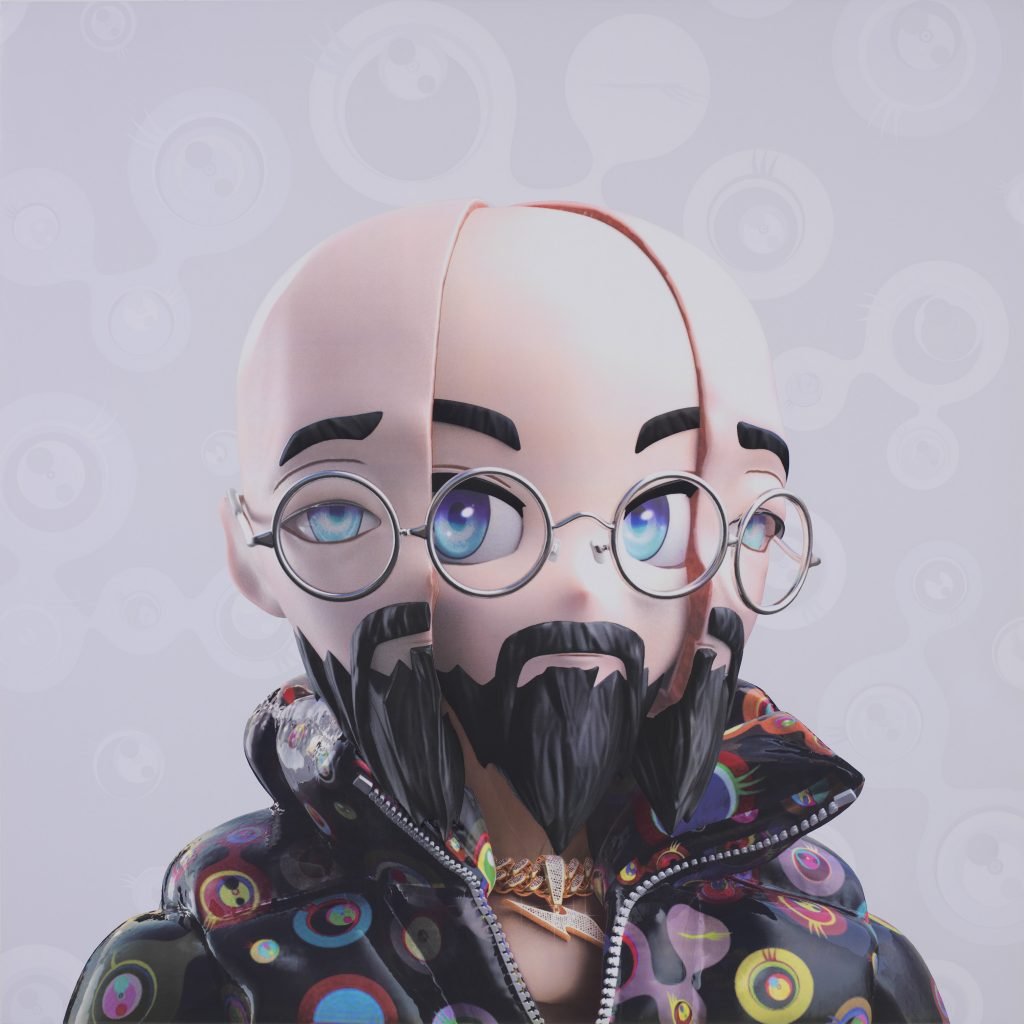
Murakami says that by collecting NFTs, you begin to see "the mystery" of what collecting art is all about.

In late March 2021, just three weeks after Christie’s sold that Beeple you heard about for $69 million, Takashi Murakami dropped his first NFTs: a series of pixelated flowers, each rendered in the artist’s signature Superflat aesthetic.
But it turned out that Murakami, like the rest of us, was still getting his head around the concept. In a surprise announcement 11 days later, the artist paused the much-anticipated NFT project, saying “it would be best to further explore the optimal format in which to offer my NFT works.”
Since then, Murakami has notched two hugely successful NFT initiatives into his belt, so it appears the Japanese artist has got the whole crypto apparatus figured out. So much so, in fact, that he’s now making physical paintings and sculptures based on his own Murakami.Flowers and Clone X NFT series, effectively reversing the process he began 14 months ago.
Hundreds of these works, as well as new paintings inspired by a porcelain vase from China’s Yuan dynasty (c. 1279–1368), make up “An Arrow Through History,” Murakami’s new exhibition at Gagosian in New York. It’s the artist’s first gallery exhibition in the city since 2014, and he’s gone all out, collaborating with NFT studios Oncyber and RTFKT (the latter of which he worked with on Clone X) to create digital viewing experiences accessible via VR headset and Snapchat. And excitement, it seems, is high: Gagosian began offering artworks from the show last week, and claims to have sold more than 120 of them in a 24-hour period.
But even though his work is back in the IRL gallery space, Murakami’s mind is on NFTs. It’s clear his dalliance in the world of digital art has had a significant impact on how he approaches his practice. Or so he told me in an email interview ahead of the opening for “An Arrow Through History.”
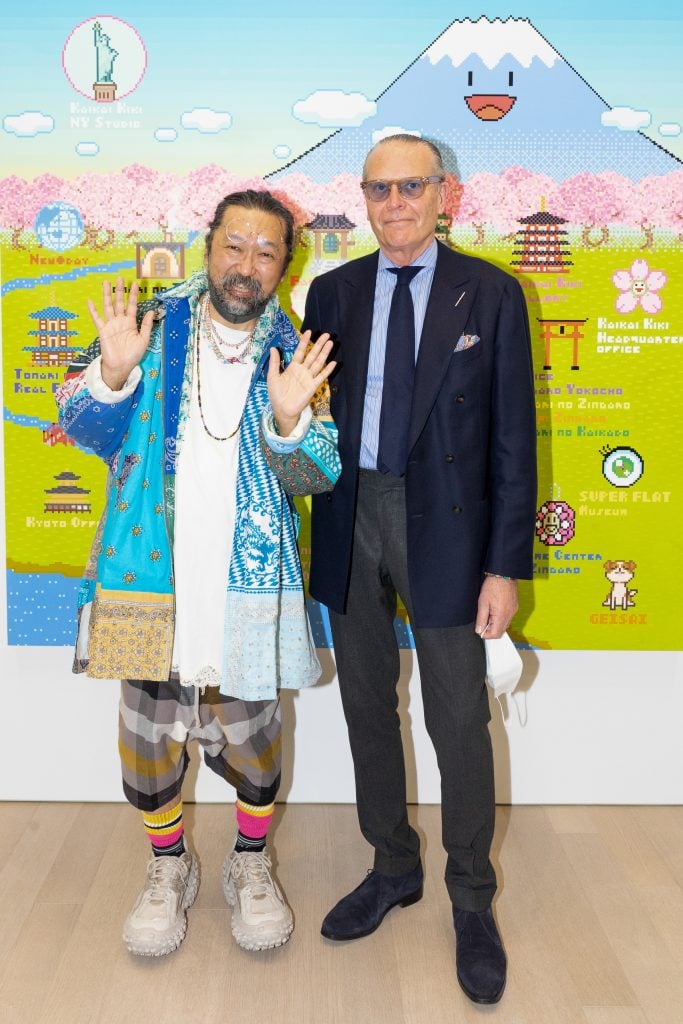
Takashi Murakami with Gagosian COO Andrew Fabricant at the opening of “An Arrow Through History.” Courtesy of the artist and Gagosian. Photo: Yvonne Tnt/BFA.com © BFA 2022.
You released your inaugural NFTs in late March 2021, but withdrew those artworks from the OpenSea market just 11 days later. Can you take me back to that moment? Why did you decide to pause and take stock, rather than learning by trial, as you originally intended?
The reason I withdrew was because, after mulling over whether I should simply rely on OpenSea and release image files as NFTs or make my own smart contract, I decided to make my own smart contract to maintain the independence of the project in the future. It took a while to find the right company that could do that with me.
How did you go about better understanding the NFT landscape after the postponement? What did you learn?
I tried to understand what the audience/collectors were hoping for from the NFT market or its structure. As a context, it was necessary for me to understand the idea of cryptocurrency and Web 3.0, and it took a long time for me to get this part installed in my mind.
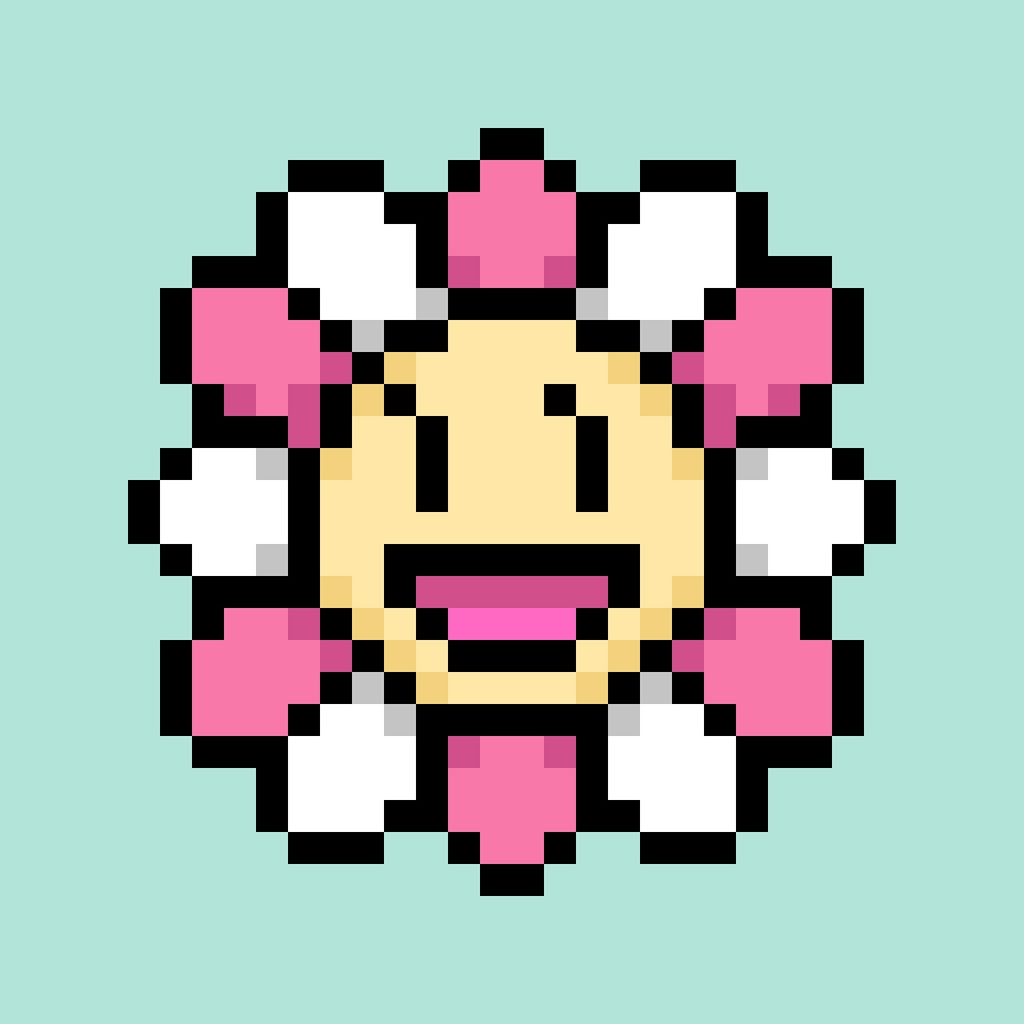
Takashi Murakami, Murakami.Flower #0085 Smiling Girl (2022). © 2022 Takashi Murakami/Kaikai Kiki Co., Ltd. Courtesy of Gagosian.
You’ve mentioned before that you see “great potential” in the world of crypto-art. What excites you about it? How, if at all, do you see it transforming the art world?
Collecting digital images (.jpg etc.) as NFT art actually pierces the essence of an art collection. The concept of “owning” something is in fact abstract, and as a mechanism to ensure that concept, NFT art relies on cryptocurrency, Web 3.0, and blockchain—magic words—for it to function. Physical artworks, as corporeal objects, need materials such as canvas and paint, or stone and metal, to bolster the concepts that back up their values. But it’s possible that actually such materials are not required for art to be art. That’s the most notable thing that is revealed when you start making NFT art.
By collecting NFTs, you start to unpack and understand the mystery of what the act of collecting art means. Even if it’s just an image, the minute you become conscious of the fact that you purchased that image and share that fact with others, the concept of collecting is established in your brain. And in the dealings of crypto art, such exchanges of information happen the fastest; I believe that those who have become aware of the budding of that structure will never be able to go back.
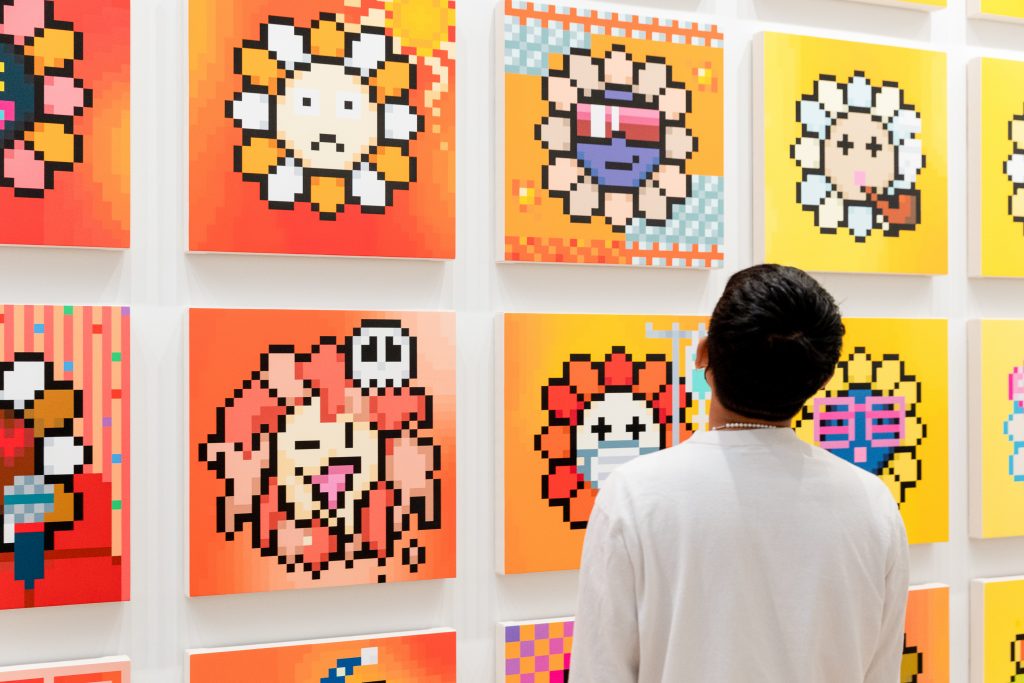
A gallery-goer looks on at the opening of Takashi Murakami’s “An Arrow Through History.” Courtesy of the artist and Gagosian. Photo: Yvonne Tnt.
Do you feel like you’ve found a new or different audience through NFTs?
The rise of NFT art was completely synchronized with the development of the pandemic. If it weren’t for the pandemic, it wouldn’t have permeated this much. When people were no longer able to physically come and go, we started to focus solely on ideas, and the act of sharing the abstract eliminated the noise; we started to pursue the question of what value meant. I think the new audience made up of such people who are able to think in this way have emerged as a result.
Many established artists have made NFTs based on their own artworks, but you also reversed that process, making real-world pieces based on NFTs for the new show. What about that act of translation—of turning digital artworks into physical ones—interests you?
I wanted to chase the human evolution, catch up, take over, and see the future beyond, and for that I paid attention to the metaverse as an angle. I thought that I could be reborn if I could install in myself a new yardstick that couldn’t be measured using an existing sense of value. So, I tried, and was indeed reborn.
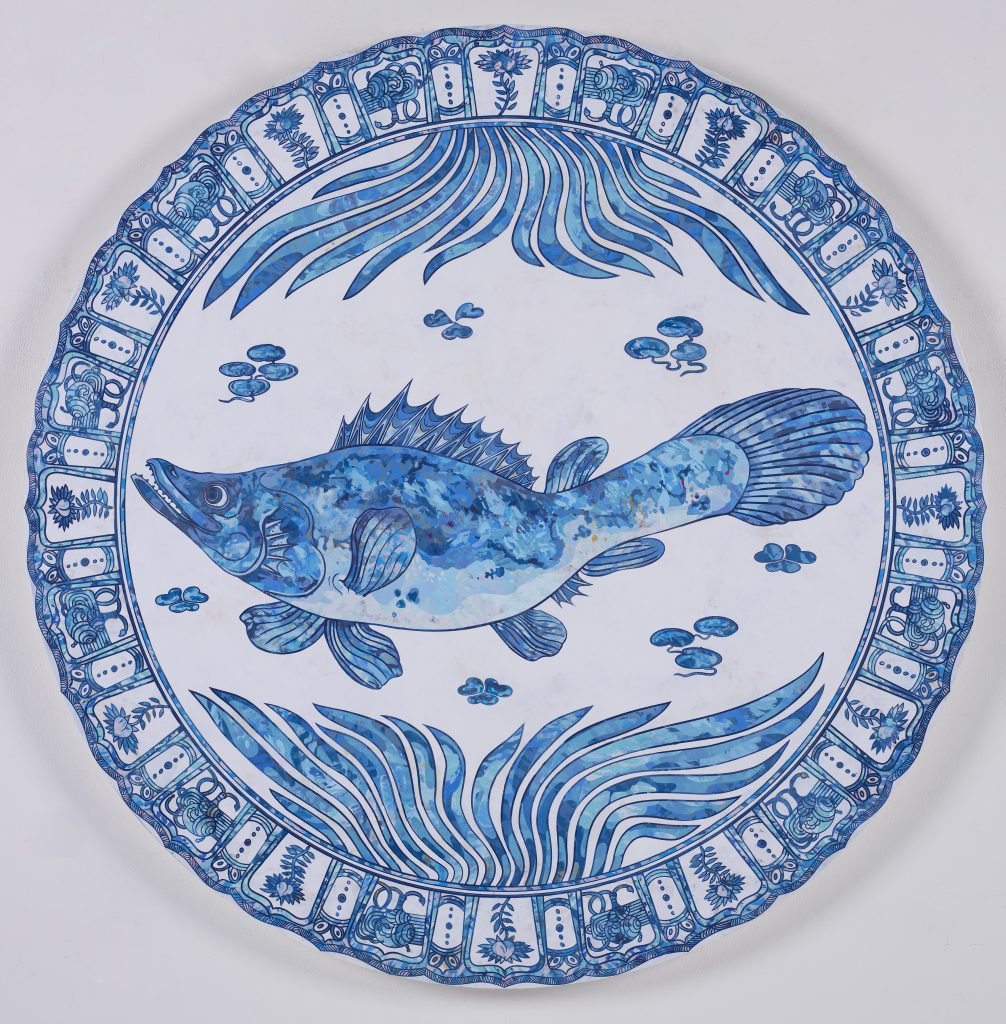
Takashi Murakami, Chinese Perch After Kitaōji Rosanjin (2022).
© 2022 Takashi Murakami/Kaikai Kiki Co., Ltd. Courtesy of Gagosian.
In addition to the new NFT-related pieces, the Gagosian exhibition finds you looking back seven centuries to the Yuan dynasty for inspiration. With that in mind, what does the show’s title, “An Arrow through History,” mean to you?
When I was in art university, I studied in the Nihonga [Japanese painting] department. At the height of the bubble economy, paintings in the genre, with “Nihon (Japan)” in its title, were traded at the highest prices in the Japanese art scene. After the economic bubble, however, Nihonga as a genre vanished. After the war, the wealthy class, with their economic backing, wanted to regain Japan’s status, and consumed impressionistic paintings based on themes such as Mt. Fuji, the beauty of women in kimono, the changing seasons in Japan, and the Silk Road as one of the origins of Japanese culture that Marco Polo traced. However, the bursting of the bubble economy sent a second shock wave of defeat throughout Japanese culture, and Nihonga disappeared.
Yet I had studied this Nihonga for six years, and so the traditional Japanese painting subjects have been imprinted in me. With this as my artistic foundation, I assumed there must be some commonalities that could be found in the path of conceptual art leading up to NFT art, and I made works based on that assumption. That commonality, for me, was the Superflat method.
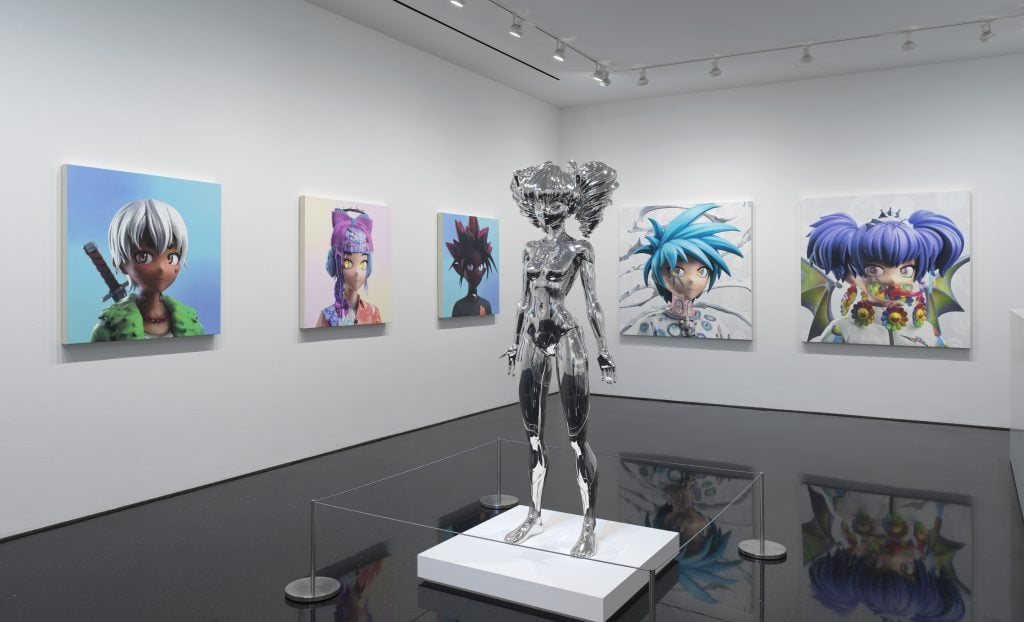
Installation view of Takashi Murakami’s exhibition, “An Arrow through History,” 2022. Artworks © 2022 Takashi Murakami/Kaikai Kiki Co., Ltd. Photo: Rob McKeever. Courtesy of Gagosian.
Major collaborations with fashion and luxury brands have helped define your career, and your recent project with Nike and RTFKT (Nike Dunk Genesis Cryptokicks) no doubt falls into that category. What has the success of those collaborations taught you about art?
In each trend invariably resides, hidden, a context backed by history. So, if you seek out that context, refine it as the target, and launch a shot right into the center of it, it will inevitably become an impactful project. That’s how it works.
“Takashi Murakami: An Arrow through History,” is on view now through June 25, 2022.